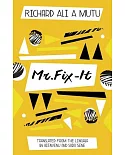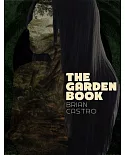In Maps of the Imagination, Peter Turchi posits the idea that maps help people understand where they are in the world in the same way that literature, whether realistic or
experimental, attempts to explain human realities. The author explores how writers and cartographers use many of the same devices for plotting and executing their work, making crucial
decisions about what to include and what to leave out, in order to get from here to there, without excess baggage or a confusing surplus of information. Turchi traces the history of maps,
from their initial decorative and religious purposes to their later instructional applications. He describes how maps rely on projections in order to portray a three-dimensional world on the
two-dimensional flat surface of paper, which he then relates to what writers do in projecting a literary work from the imagination onto the page.
-

El cielo protector/ The Sheltering Sky
$525 -

Ask the Dust
$595 -

The Ramayana: A Shortened Modern Prose Version of the Indian Epic; Suggested by the Tamil Version of Kamban
$1,225 -

Some Things I Never Thought I’d Do
$488 -

In the Moon of Red Ponies
$523 -

Collected Stories Of Deborah Eisenberg
$490 -

The Big Hype
$453 -

Last Catamount
$560 -

Mr. Fix It
$420 -

El obsceno pájaro de la noche/ The Obscene Bird of Night
$453 -

Laura Warholic: Or, the Sexual Intellectual
$875 -

Don’t You Forget About Me
$490 -

Oh, God!
$453 -

Body Temperature
$805 -

The Boyfriend from Hell
$453 -

Tereza Batista cansada de guerra / Tereza Batista Tired of War
$525 -

The Garden Book
$593 -

Head Start
$453 -

No Dominion
$525 -

An Amish Christmas: A Novel
$420

